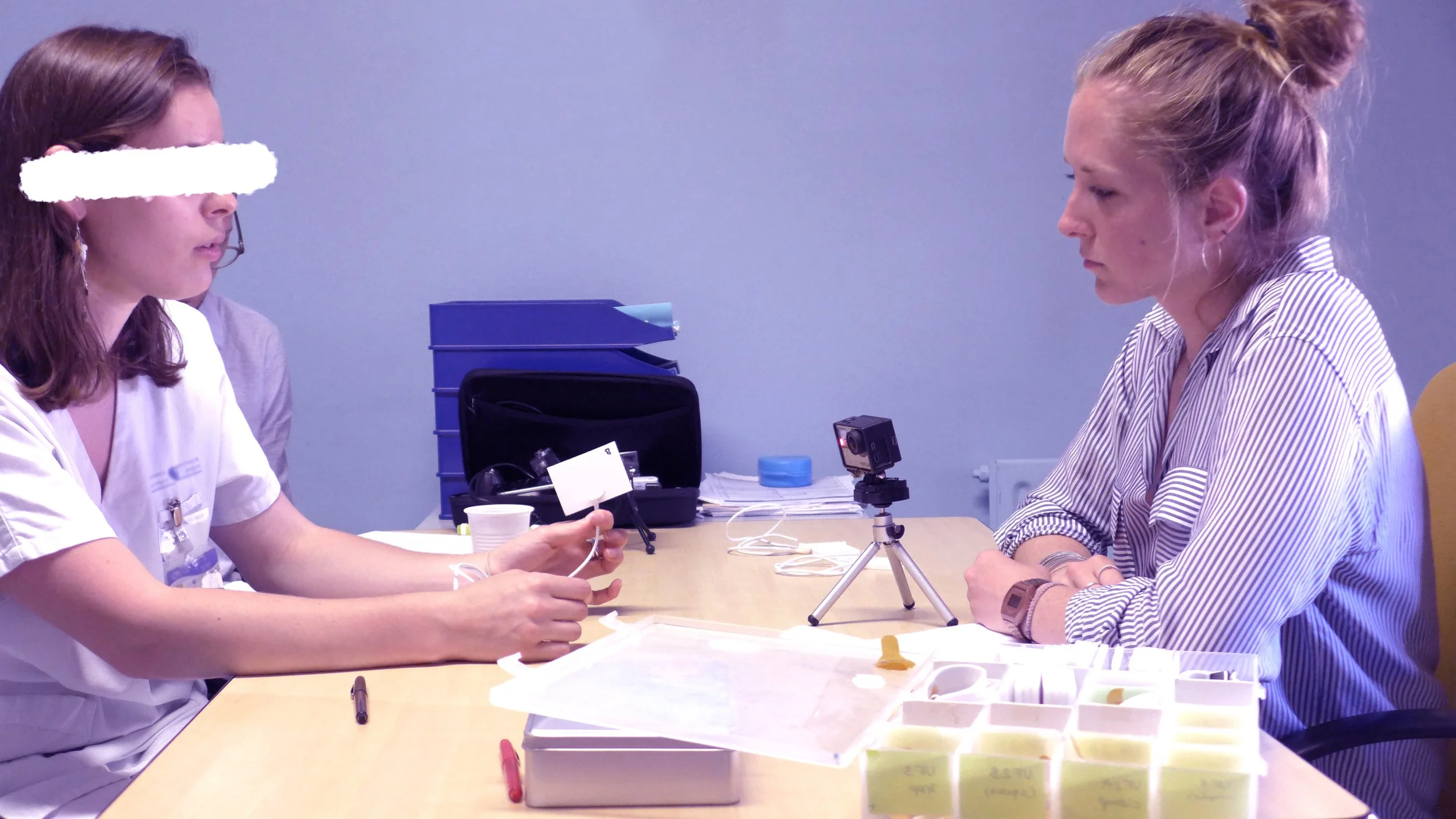Every detail matters when care is critical.
The task was simple on paper: design the next generation of an existing wearable medical system for fragile patients. In practice, it meant rethinking a device used on the most delicate lives, in the most sensitive moments.
Designing a patient monitoring wearable V2.
Where we began.
We started with what already existed. A quick analysis of the current product, a few assumptions, and a burst of sketching and 3D-printed mock-ups.
These early ideas weren’t answers — they were questions made tangible.
Into the field.
Then came the most important step: walking into hospitals. We watched patients, nurses, and doctors use the existing system and try/comment on our rough prototypes. We didn’t just test; we observed. Every movement, hesitation, and workaround told us more than any lab ever could.
What we heard and saw.
In neonatal units NICU, the fixation system of the wearable was rarely used as intended. Even the slightest pressure risked bruises — in the worst cases, fragile bones could be harmed.
Nurses knew this from experience.
One told us plainly:
“This babies are so fragile, I’m too afraid to press and hurt them, so I just put some tape to keep the device in place.”
That wasn’t hesitation — it was a lived experience. The design demanded actions caregivers knew could cause harm. They improvised, trading one set of risks for another. Tape slipped, alarms blared, and stress spread through the room.
Speaking with more doctors and nurses, we realised this wasn’t an exception. It happened all the time, every day. A workaround had quietly become the norm, carrying risk and stress. What was meant to protect and secure ended up creating more stress.
From hesitation to confidence
Back to the desk. Back to the field. Back to the desk. Back to the field etc…
We carried these observations home. Refined ideas. Built new iterations. Tested again. Returned to the field. Each loop of feedback brought us closer to designs shaped not by assumption, but by lived experience.
The breakthrough was clear: pressure was a problem.
The design could no longer rely on pressing down. Our focus shifted to systems that held without harm, respecting fragility while staying secure.
Note: This is one of many insights uncovered during the project.
For confidentiality reasons, we’ve chosen to illustrate the work through this example.






